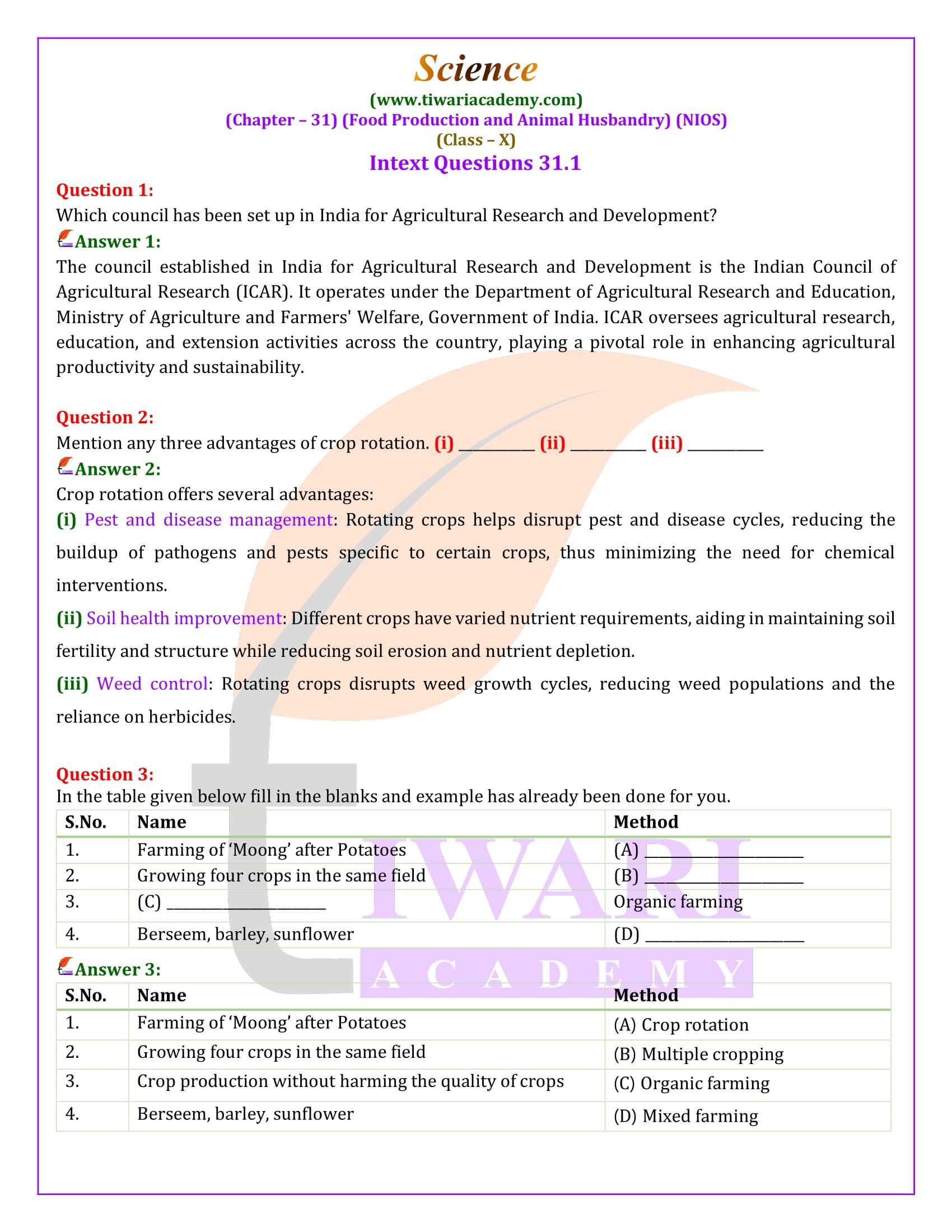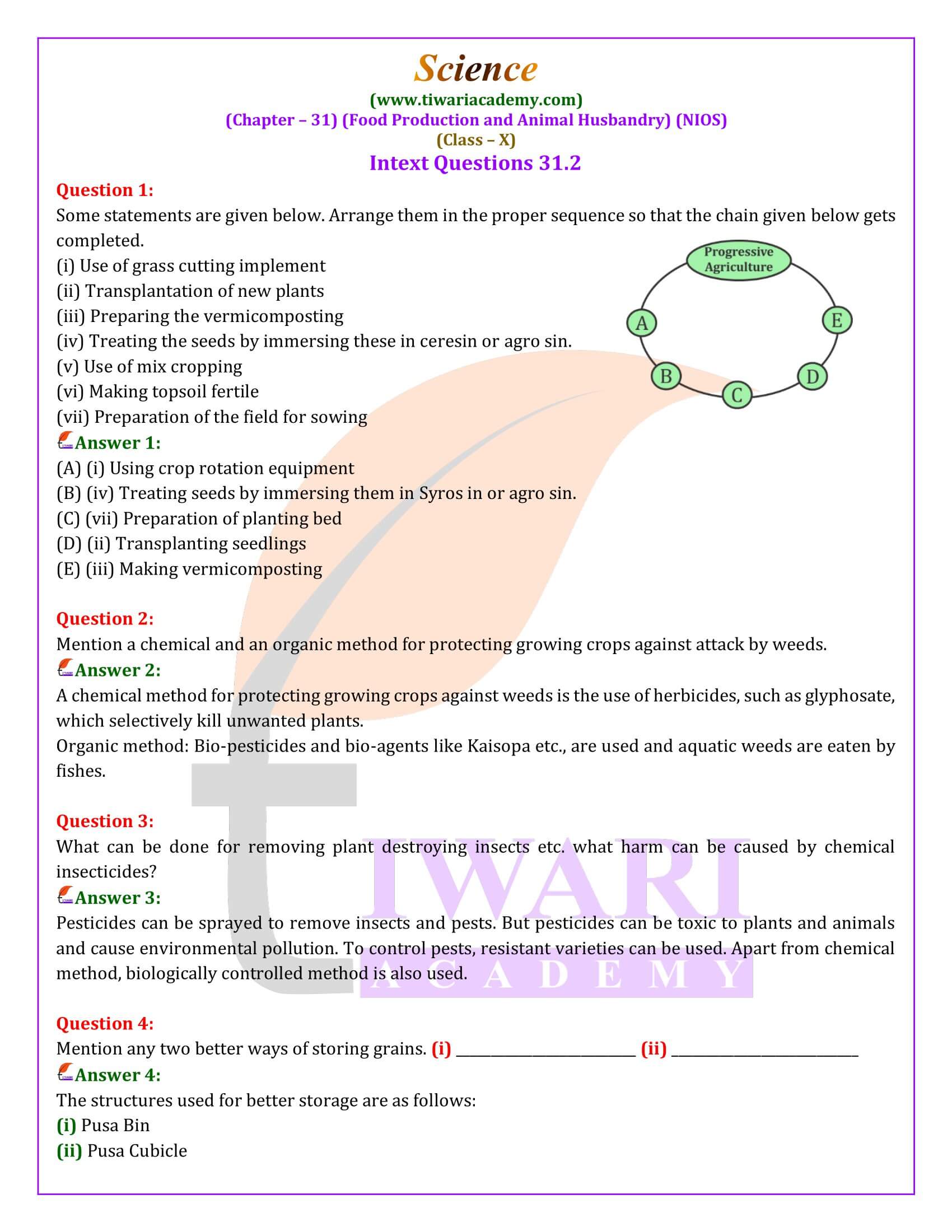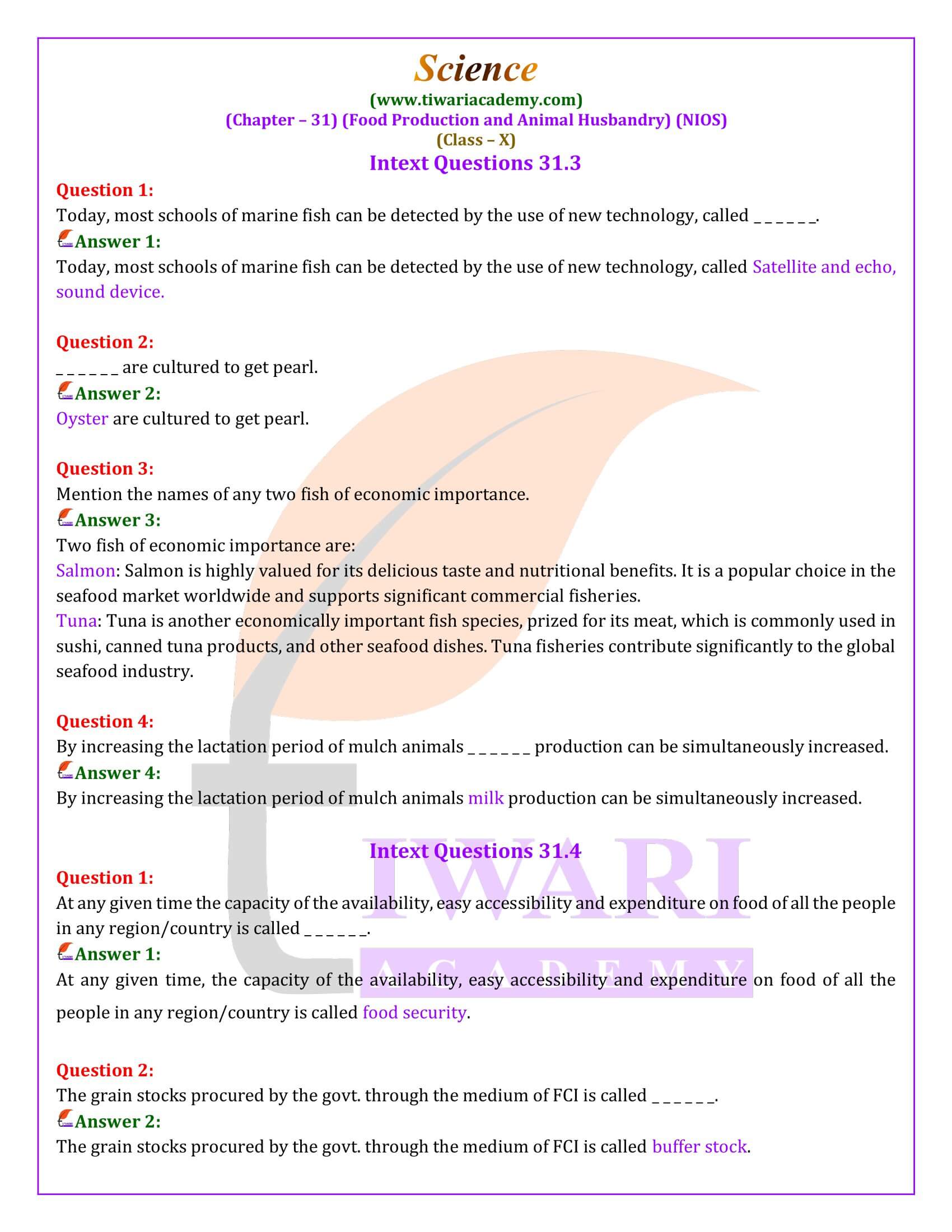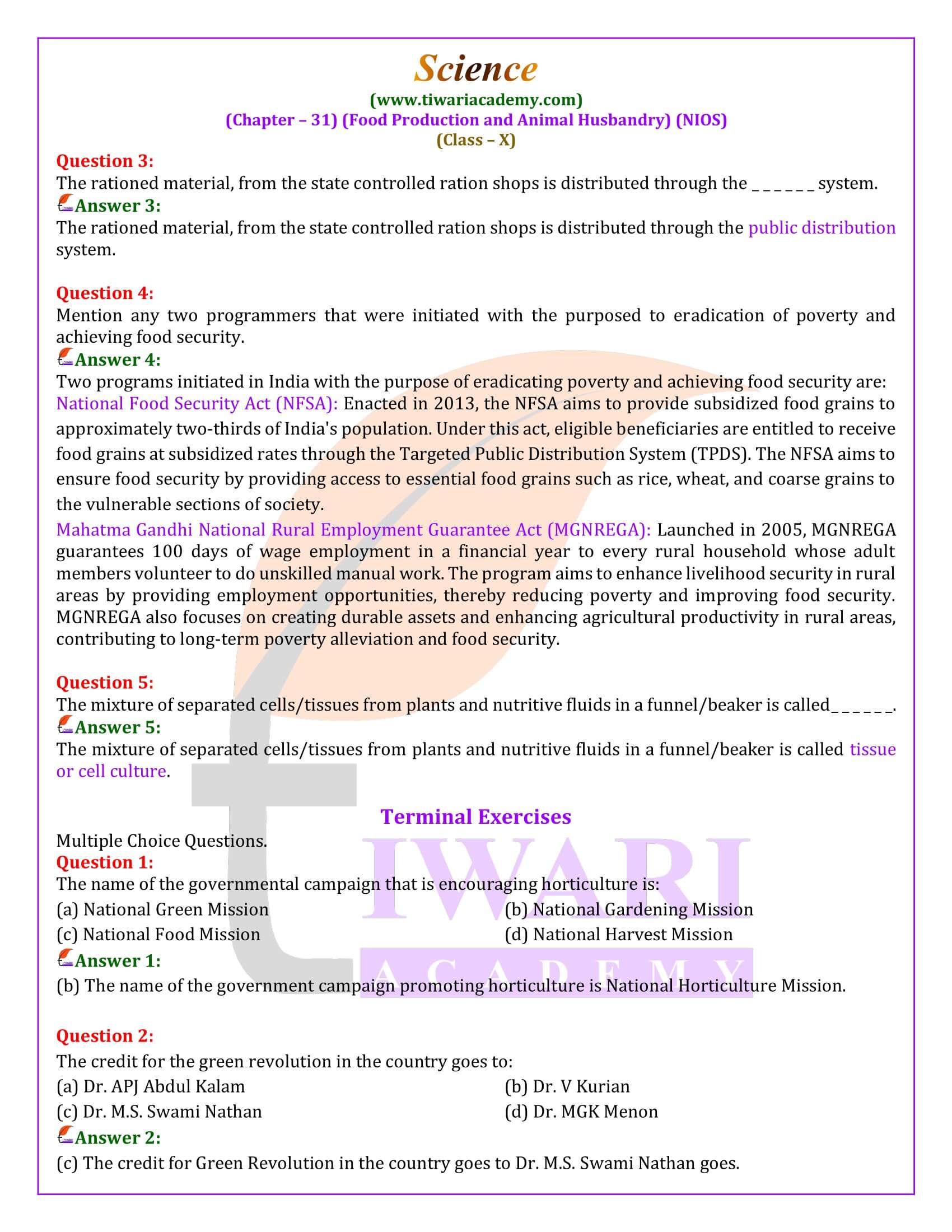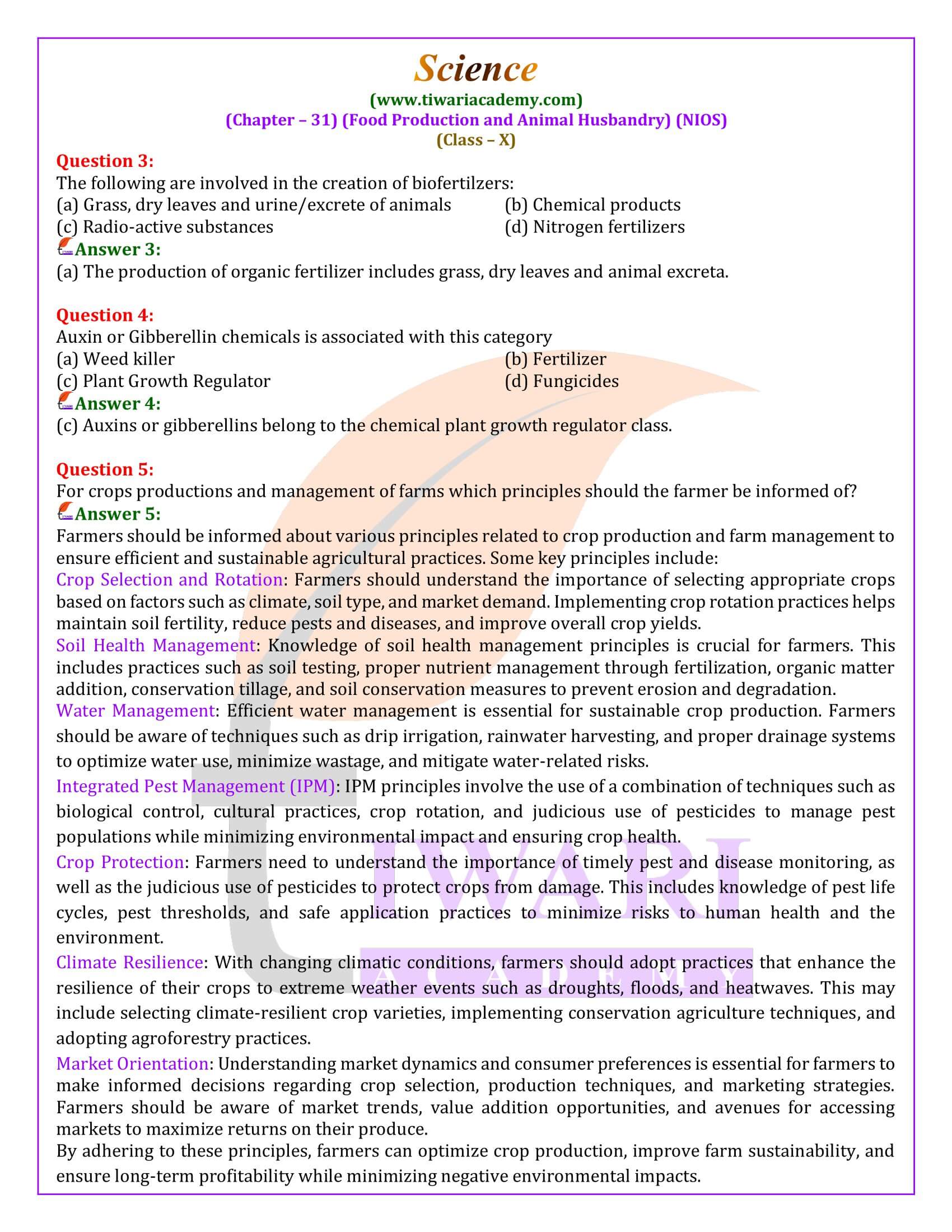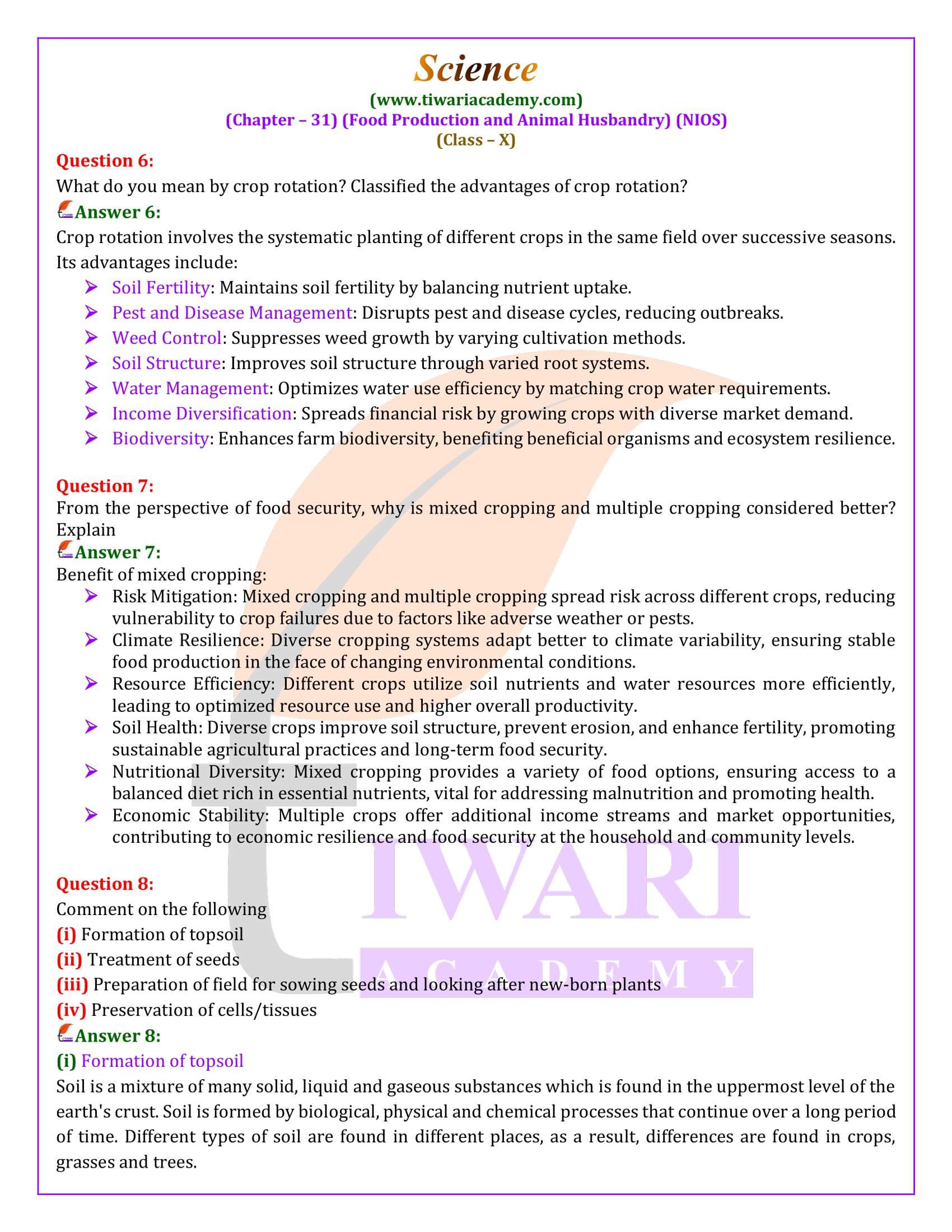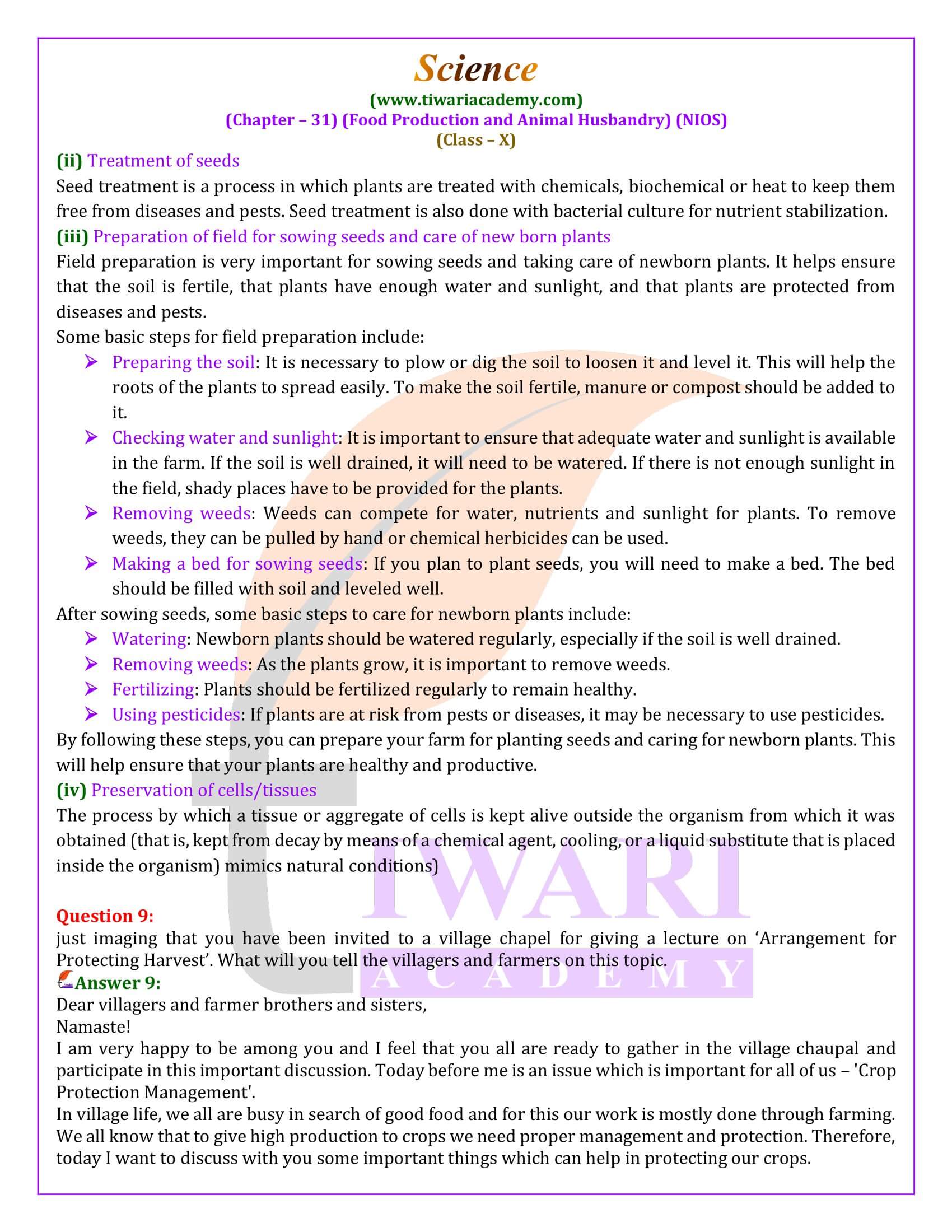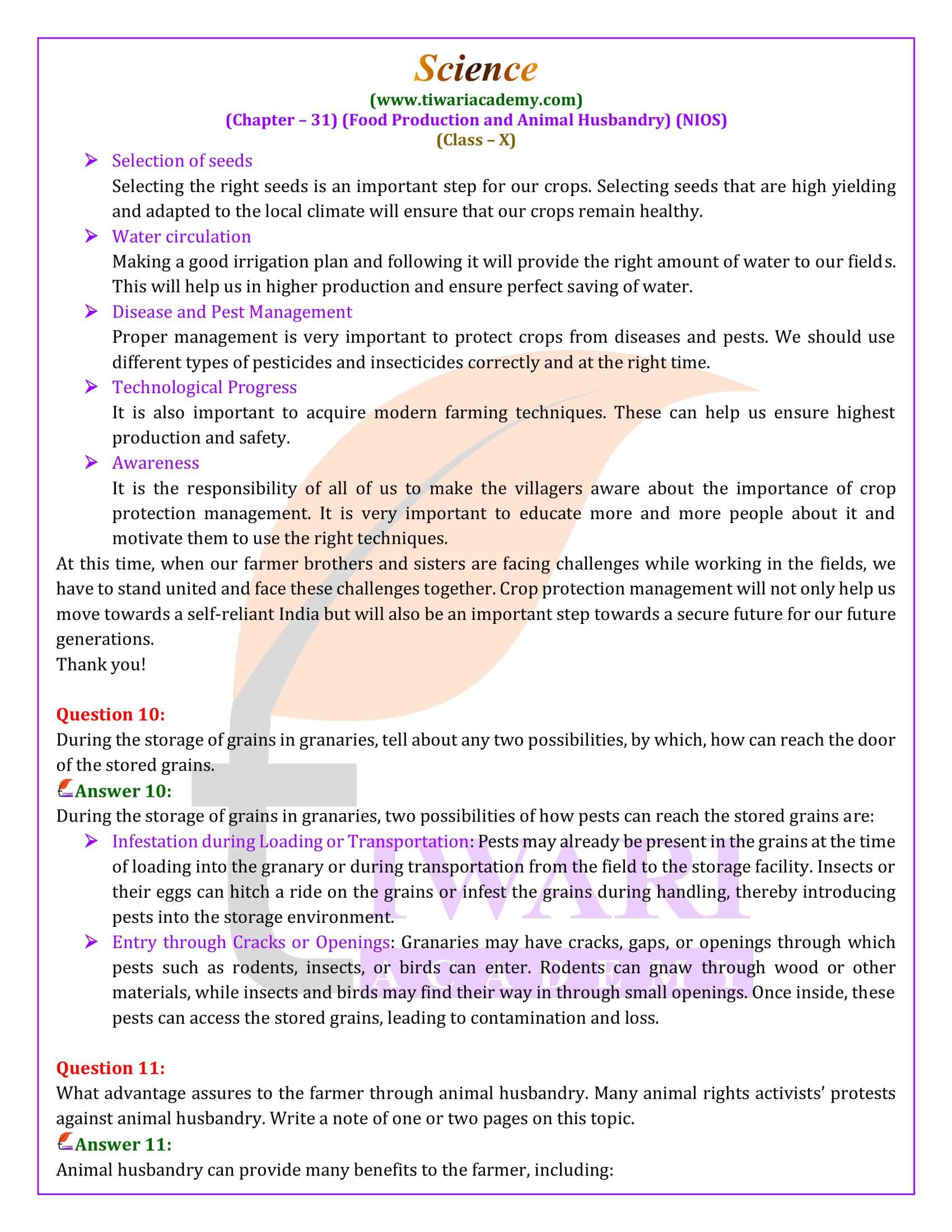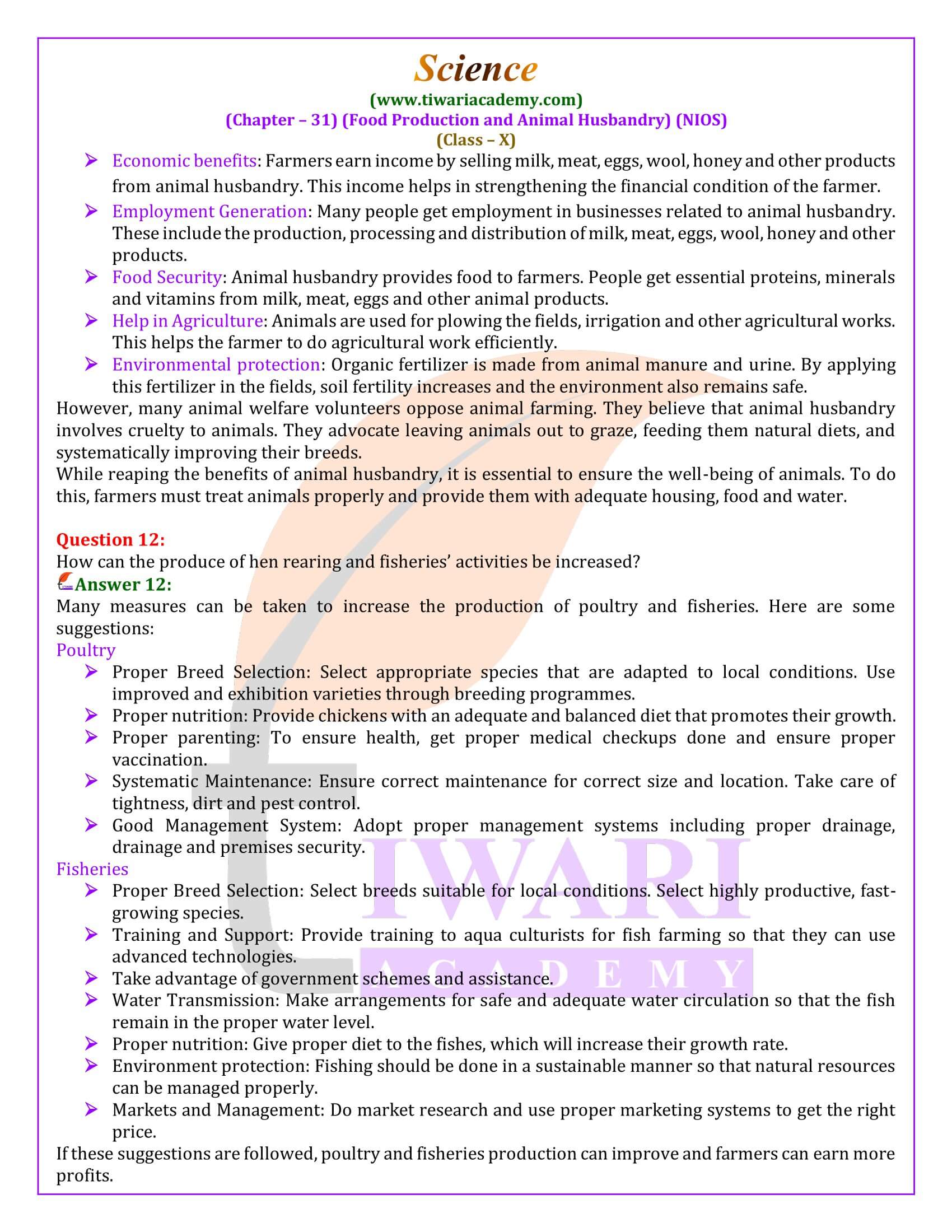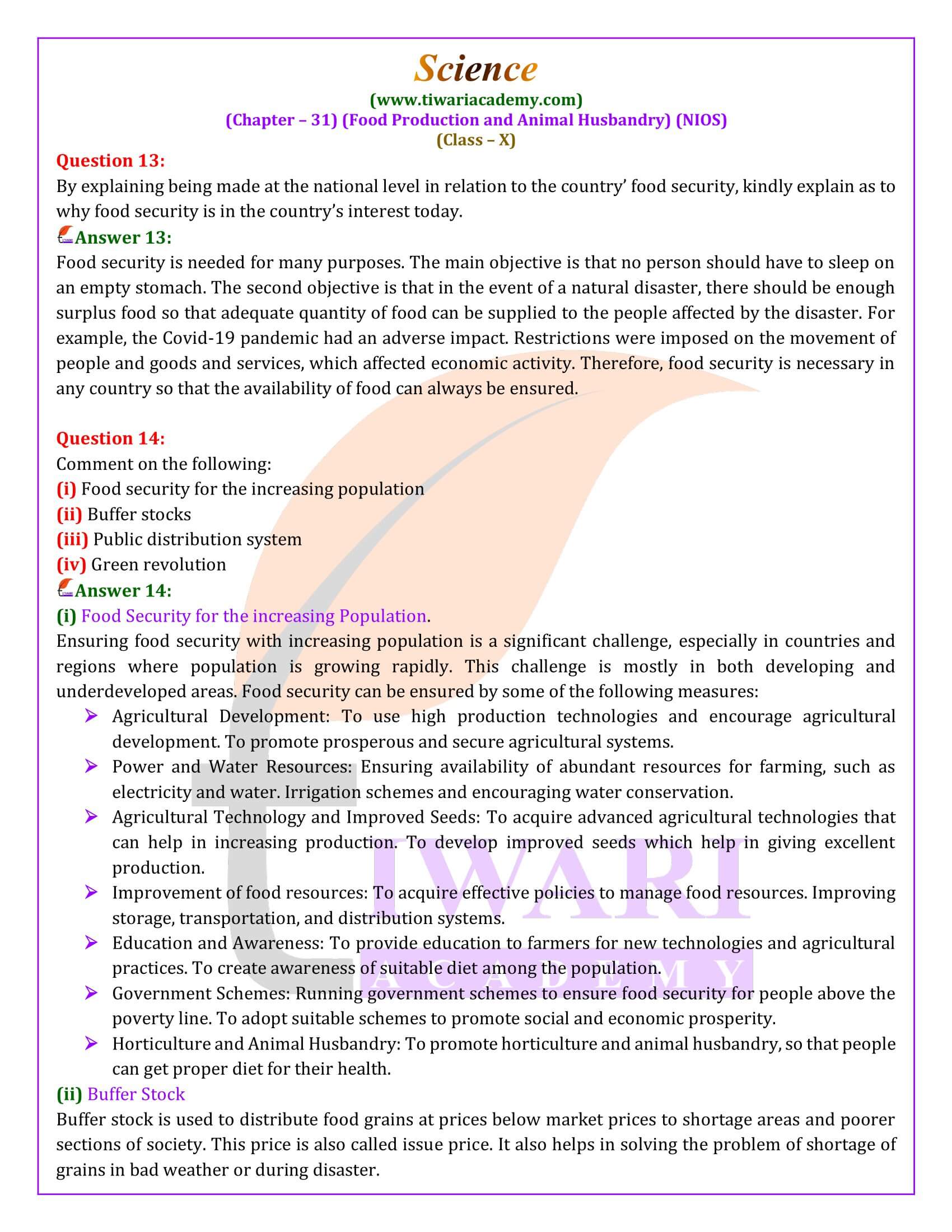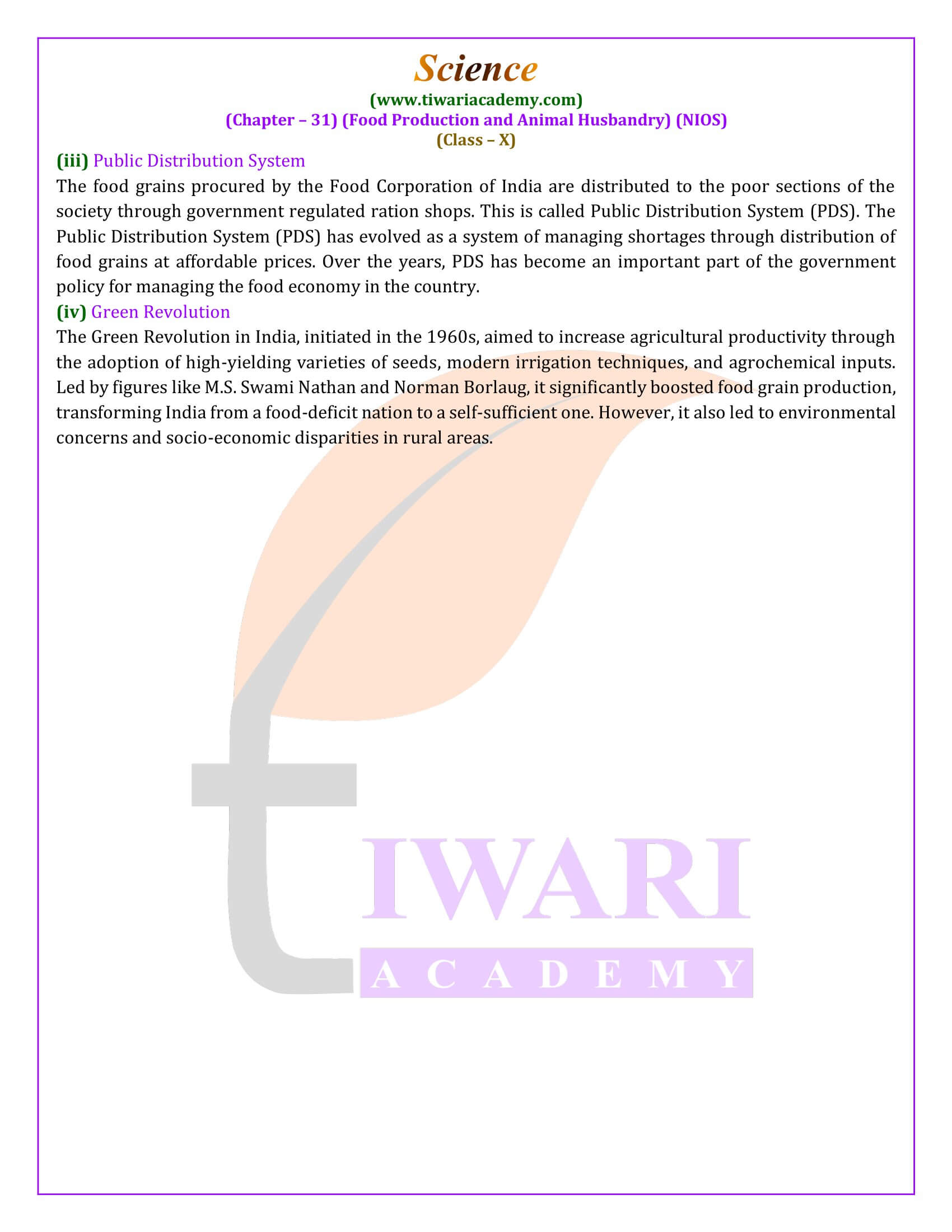NIOS Class 10 Science Chapter 31 Food Production in Hindi and English Medium revised and updated for academic session 2025-26. Get the simplified question answers of NIOS Class 10 Science chapter 31 with examples and exercises.
Food Production and Animal Husbandry
NIOS Class 10 Chapter 31 of the Science and Technology module focuses on food production and animal husbandry, delineating the historical and modern advancements in agricultural practices and their implications on human and environmental health. The chapter 31 emphasizes the transformation from primitive gathering to sophisticated agricultural and animal rearing techniques, spotlighting significant milestones such as the Green Revolution and the integration of biotechnological advances in crop and livestock management.
Historical Perspective and the Green Revolution
NIOS Class 10 Science Chapter 31 begins with a historical overview of agriculture, tracing its roots to ancient human civilizations that transitioned from foraging to farming. It details the evolution of agricultural tools and techniques, leading up to the monumental Green Revolution in India. The Green Revolution, propelled by Dr. M.S. Swaminathan and others, marked a significant era of increased crop yields and agricultural self-sufficiency in India, primarily through high-yield variety seeds and enhanced farming techniques.
Agricultural Practices and Crop Production
Detailed discussions on the principles of crop production, such as crop rotation, mixed and multi-cropping, organic farming, and modern irrigation methods, provide a comprehensive view of the methods aimed at enhancing crop yield and sustainability. These sections offer practical insights into the maintenance of soil fertility, the importance of seed quality, and the strategic use of water resources.
Challenges and Sustainable Solutions
While acknowledging the successes of the Green Revolution, NIOS Class 10 Science Chapter 31 also addresses the ensuing challenges, including soil degradation, pesticide overuse, and the ecological impacts of intensive farming. It advocates for sustainable practices like organic farming and the use of biofertilizers to mitigate negative environmental impacts and promote long-term agricultural productivity.
Animal Husbandry and Biotechnology
NIOS Class 10 Science Chapter 31 extends beyond crop production to include animal husbandry, detailing methods to improve livestock productivity and health. It covers various aspects of caring for milch animals, poultry farming, and fisheries, with a focus on breeding practices, disease management, and the nutritional requirements of farm animals. Additionally, it touches upon the role of biotechnology in agriculture, highlighting how genetic engineering and tissue culture can revolutionize food production.
Socio-economic Aspects and Food Security
Food security is a recurring theme, emphasizing the need for a stable food supply and access to nutritious food for all segments of the population. NIOS 10th Science Chapter 31 discusses India’s public distribution system, the role of buffer stocks, and government initiatives aimed at ensuring food availability and affordability, particularly for the underprivileged.
NIOS Class 10 Science Chapter 31 provides a holistic view of the intersections between agriculture, technology, and society. It encourages a balanced approach to food production, one that leverages technological advancements while being mindful of environmental sustainability and social equity. NIOS 10th Science Chapter 31 serves as an educational resource that not only informs but also instills a sense of responsibility towards sustainable development in agriculture and animal husbandry.
